Nature vs. Nurture in Youth Athletic Development
Improper Youth Athletic Development, or Is It Mom and Dad’s Fault That Your Athletes Aren’t Fast Enough?
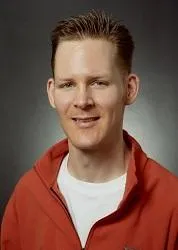
By Phil Loomis
When it comes to youth athletic development, the hottest question in the last decade has been one of nature vs. nurture, or genetics vs. environment. Posed another way: Are Justin Verlander and Calvin Johnson elite athletes because they were lucky enough to have the right parents? Or are they superstar athletes because they were exposed to an ideal environment that afforded them the opportunity to develop their talents?
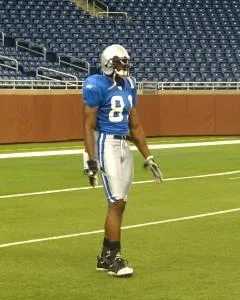
In a recent interview, Dr. Joe Baker, a Professor of Applied Exercise Science at Queens University, hammered home several points to which all young athletes, coaches, parents, and youth sport organizations should pay close attention.
First, Baker says coaches should focus efforts on the factors that are able to be controlled or influenced within the training environment. “While genes are important,” Baker said, “[you can] forget about them because you have no control over that part of the equation.”
Next, Baker emphatically asserted that genes are not deterministic. Because of the complex interaction between genes and the training environment, it is impossible to determine whether a person has the “right” genetic make-up to become an elite athlete until well after such athletes have already been through the optimal training environment.
This is good news for coaches. We can dramatically improve our young athletes’ chances for future success IF we concentrate on creating an optimal training environment for youth athletic development while also providing high-quality training. This also means athletes can stop blaming parents for any relative early lack of athletic talent (at least from a genetic perspective—environment and training opportunities are well within a parent’s control).
What exactly is the ideal/optimal training environment? The popular “10,000 Hour Rule” has been touted in the media and is the subject of many books, most prominently Malcolm Gladwell’s Outliers.1The theory is that in order to become an expert in any field (athletics), it is necessary to devote 10,000+ hours of specific practice/training to one domain (sport).

Sadly, far too much focus has been placed upon an arbitrary number, and the real message has been lost. The culture in which athletes practice and the quality of the training are much more important than the sheer quantity of time spent devoted to deliberate practice.
If an athlete shoots 10,000 basketball jump shots a week for five years with lousy technique, he or she would likely be a very flawed and inconsistent shooter. On the other hand, if that same athlete were to shoot just 1000 shots a week for five years with very strong fundamental technique along with great effort and concentration, he or she would become better and a more consistent shooter than the athlete who “lives” in the gym but never seems to improve or perform when the pressure is on. Plus, that athlete could spend extra time improving speed and endurance while the other guy is clanging away on the court.
It is not the amount of time devoted to a task but the quality of that time that determines how well the skill will be developed and honed.
That said, to serve all athletes and ensure we are providing the coaching required, all sport development should be based upon long-term goals. Coaches need to implement
systems for proper youth athletic development within their sport that will allow them to break down each season with developmentally appropriate goals for the team as a whole and for each individual athlete. Scheduling and practice development can then be used to lead the team and the individuals where they need to be at the end of the season.
Other environmental factors must also be considered. Culture and even birthplace play a role. From a cultural perspective, if an athlete wants to be a football player, the United States is the place to be. Soccer in Europe and hockey in Canada are also examples of how culture influences sport development. Even within those broad areas, smaller regions tend to be better suited still (baseball in the South and Southwest, Lacrosse in the Northeast) through the availability of facilities, better coaching, and even tradition (football Alabama, lacrosse Duke, basketball Kentucky).
Where the athlete is born also influences future success. Smaller suburban centers are more likely to produce elite athletes. Just 1% of the U.S. population resides in cities between 50,000 and 100,000 residents, yet cities of this size produce 16.8% of all Major League Baseball players, 11% of PGA golfers and 17.2% of American born National Hockey League players.2
The best way to explain these demographics may be accessibility. A young athlete in Toronto, Canada, might find it difficult to find ice time because of the demands on facilities. Ice time is likely booked months ahead of time. With higher demand for space, facilities may charge more, thereby squeezing out certain athletes due to budgetary limitations. This also excludes many athletes who may just want to try the sport or just play for fun.
In this scenario, athletes are eliminated from the talent pool strictly due to financial constraints or lack of opportunity. It is then reasonable to suggest that given this information, athletes with the most long-term potential may never even get an opportunity to compete.
If birth location can make a difference, what about the potential influence of date of birth? Currently, most athletic training and competition programs are based upon chronological age much like our academic system. However, athletes of the same age between 10 and 16 can be 4 to 5 years apart developmentally. Though the use of chronological age may be easier to manage, it shouldn’t be a reason to perpetuate a system that is clearly flawed.
Consider the following evidence:
Of the 28 members on the U.S. Boys U15 National Soccer Team (all with birth year of 1998), 17 were born in the first four months of the year and only one of the athletes was born after September.3
Of the 66 members on the U.S. Girls U15 National Select Soccer Team (birth year 1998), 30 were born in the first four months of the year and only 11 after September.4
Of the 18 members on the U.S. Boys U12 National Select Baseball Team (all born in 2001 except for one born in 2002), 11 were born in the first four months of the year and only three after August.5
Of the 54 members on the Men’s Junior National Hockey Team (born in 1994 or 1995), 20 were born in the first four months of 1994 and only six after July of 1995.6
It is highly unlikely that there are fewer athletes with long-term potential born in the last quarter of the year than in the first quarter. However, upon inspection of national select team rosters, earlier births are disproportionately represented. If a young athlete is unlucky enough to be born at the tail end of a league or program’s “cut-off” date, it could be considered a huge disadvantage. The current system for developing and selecting athletes in this country rewards early-maturing athletes who may not have the ability to be elite performers. Later-developing athletes are excluded, cut, and consequently leave the sport or are segregated to recreation programs that limit training opportunities and instruction from advanced coaches. These late developers may have substantial long-term potential but are frequently eliminated from the talent pool prematurely.
Another key component of creating the optimal training environment is the concept of deliberate practice versus deliberate play. The current youth sporting culture in the U.S. has this backwards to a large degree. In the early stages of athletic development (6-13 years of age), deliberate play must dominate sport/athletic exposures. Rigorous play over practice early in life is more effective because this is a period of discovery. Young athletes are forming attitudes (likes/dislikes) toward sports, fitness, and unstructured play. Typically, athletes who are provided rich opportunities for unstructured play are not constantly hammered with negative consequences (losing, getting cut, yelled at by coach) that could deter them from long-term participation.
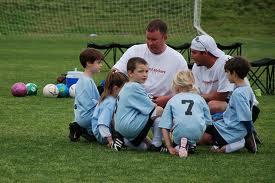
At this stage, young athletes are and should be more intrinsically motivated (fun, being with friends, etc.) and the coach’s task is to “fill their emotional buckets” so that physical fitness is viewed favorably, as well. Such individuals do not require or need much in the way of “feedback” from coaches. Rather, the coach’s goal should be to create a safe environment where it is acceptable to take chances and experiment with movement. This is the proving ground from which elite athletes are molded.
On the other hand, deliberate practice offers highly specific and rigorous training. Kids start to train like adults and that brings along with it plenty of social consequences and pressures. Kids at this point are motivated more by extrinsic factors such as winning, scholarships, awards, trophies, and recognition. A little bit of the joy begins to leak from those “emotional buckets” as time with friends and family is sacrificed due to pressures to take sports more seriously. If too much emphasis is placed upon extrinsic factors, the risk for athlete emotional depletion goes up. With no joy or passion, the drive to excel will also be vanquished.
Beyond this complex mish-mash of environmental influences, what are the essential cogs for developing elite athletes?
Most simply, the pursuit of excellence begins with kids who are intrinsically motivated. The process must be encouraged rather than dominated by coaches, i.e., the coach cannot “want it” more than the athlete does. The essential cogs to the athletic development machine are commitment and motivation from the athletes. Young athletes must be driven by a desire to master the task and the willpower to persevere through the inevitable ups and downs inherent in sport.
From a coaching perspective, and for appropriate youth athletic development
, it is essential to match the environment to the needs of the performer. In other words, the coach must meet the young athlete “where he or she is.” As an example, a skilled athlete who fatigues easily demonstrates the deterioration of skills at the end of games or even a competitive season does not need MORE skill practice. Instead, the coach must provide stimulus to improve stamina and endurance in order for that athlete to express skill consistently throughout an entire game/season.
Coaches also need to maintain the delicate balance between being comfortable and uncomfortable. Athletes should be provided opportunities to succeed and build confidence by being exposed to appropriate challenges. However, when the time is right, the coach should encourage such individuals to test themselves on that uncomfortable edge so that improvement can continue.
Finally, all coaches must firmly comprehend that talent development is not a linear process. Young athletes are in a constant state of growth flux. Bodies are always changing. Athletes can be completely different people from day to day due to the maturation and growth process. Emotional and social development is also a factor that must be considered. Kids are experiencing many things for the first time when everything in their life is in a constant state of discovery, experimentation, and formation. Often the “outstanding” 12 year-old may hit a wall and lose all sense of coordination, oftentimes without explanation. But this “regression” may be just what that athlete needs in order to make the next leap forward in development. These factors are largely outside our control, but we do have to understand them so that we are prepared in order to adapt the training environment to meet the current needs of that athlete while considering the long-term potential of youth athletic development.
From an athletic standpoint, it is critical that our athletes be highly adaptable. This means they must have robust and broad athletic exposures during the developmental years. Athletes who posses a large foundation of non-specific athleticism can cope with predictable and unpredictable situations and are able to succeed in any environment.
As an example, the International Track and Field Association recently introduced a change that involves when the athlete has to release the pole when clearing the crossbar. That may not seem like a drastic change, but many athletes have spent their entire careers training one way. If a change is introduced in your sport, how well will your athletes adapt to it? Will they be able to handle the change? Without highly adaptive athletic ability, it would be very difficult and could result in a significant drop in performance. Sports rules are always subject to change, especially given the increased attention paid to player safety. Prepare for the unexpected in sport—change is inevitable!
In summary, athletes have yet to reach their ultimate ceiling of potential where the perfect genetic profile is a prerequisite for future success. The ability to identify a single gene (or sequence of genes) that is responsible for sport performance (say a baseball pitching gene) is just not possible. Even if such a scenario were to become a reality, we still will not know for sure until after such individuals prove themselves to be an elite athlete. This would only be possible after the developmental process has been “lived through.”
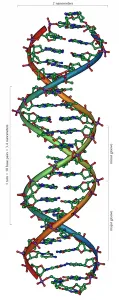
Genetics should not be a consideration when developing young athletes because it is a factor that lies well outside of our influence and would be rather pointless to pursue. Kids have enough trouble getting adequate sleep, eating enough fruits and vegetables, and gaining a diverse athletic foundation outside of a sport-specific environment. Once these areas have been addressed, we can start to tackle more advanced concepts like post/pre competition nutrition, examining genetic profiles, and addressing an individual’s muscle fiber composition. But in reality, most kids will never get to that point during their school years (K-12). Leave the advanced stuff alone until college where the universities have the personnel, resources, and facilities to adequately address them.
Our time is better spent meeting the kids where they are by improving the environment and overhauling a developmental infrastructure that has become strikingly flawed! When these areas are adequately addressed, we have a better chance of providing those who do have the essential cogs (mental durability and the will to master their craft—intrinsic motivation) for athletic success to reach their ultimate potential by following a long-term model of youth athletic development.
-Phil Loomis
Youth Athletic Development/Nutrition Specialist
References:
1.http://www.amazon.com/dp/0316017930/ref=rdr_ext_sb_ti_hist_1
2. Joe, Baker and Steve Cobley. Talent Identification and Development in Sport: International Perspectives. New York: Routledge, 2012. Print.
3.http://www.ussoccer.com/teams/youth/us-under15-boys/player-pool/2013-player-pool.aspx
4.http://www.ussoccer.com/teams/youth/us-under15-girls/player-pool/2013-player-pool.aspx

High School Strength Coach Certification
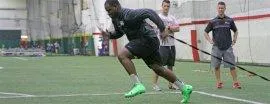
Certified Speed & Agility Specialist

Kettlebell Instructor Course
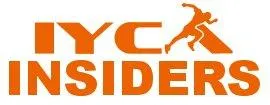
IYCA Insiders - Exclusive Access

Youth Fitness Specialist Certification
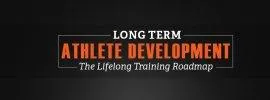
Long Term Athlete Development

Youth Nutrition Specialist Certification

Copyright © 2008 - 2025 International Youth Coaching Association. All Rights Reserved
|
|

